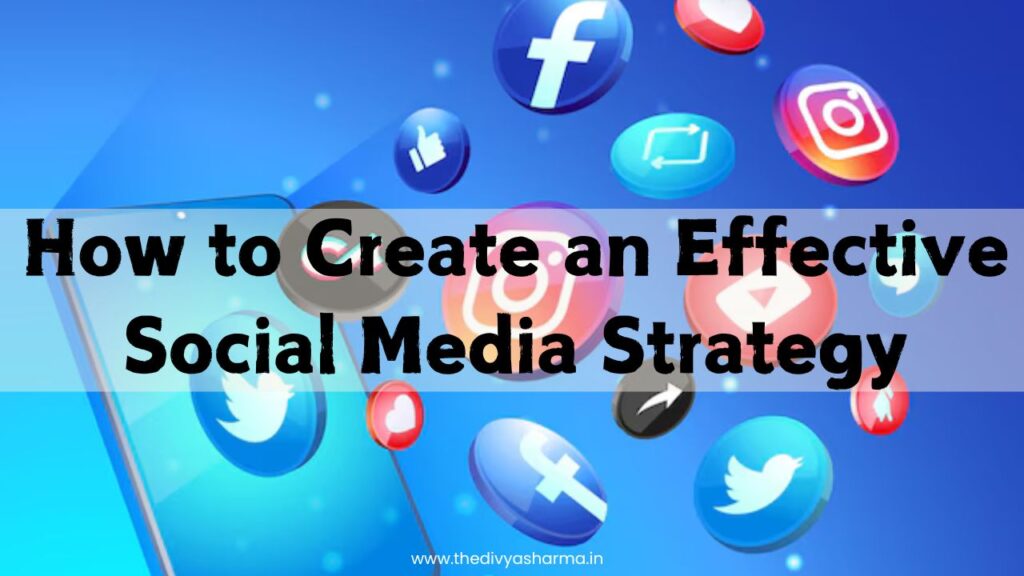
How to Create an Effective Social Media Strategy
Table of Content
On-Page SEO Best Practices for 2024
In today’s digital age, a strong social media presence is crucial for businesses of all sizes. However, simply having social media accounts is not enough. To truly harness the power of social media, you need a well-thought-out strategy. Here’s a step-by-step guide to creating an effective social media strategy that can help you achieve your business goals.

1. Define Your Goals
The first step in creating a social media strategy is to define your goals. What do you want to achieve with your social media efforts? Your goals will guide your strategy and help you measure success. Common social media goals include:
- Increase Brand Awareness: Expand your reach and make more people aware of your brand.
- Generate Leads: Attract potential customers and encourage them to take action.
- Boost Engagement: Foster interactions with your audience through likes, comments, shares, and messages.
- Drive Website Traffic: Direct followers to your website to learn more or make a purchase.
- Increase Sales: Use social media to directly influence purchase decisions.
2. Know Your Audience
Understanding your target audience is crucial for creating content that resonates with them. Conduct research to gather insights about your audience’s demographics, interests, behaviors, and pain points. Use tools like Google Analytics, social media insights, and surveys to collect this information. Create detailed buyer personas to represent your ideal customers and tailor your content to their needs.
3. Choose the Right Platforms
Not all social media platforms are created equal. Each platform has its unique user base and content style. Choose platforms that align with your business goals and where your target audience is most active. Here’s a brief overview of popular platforms:
- Facebook: Great for community building and sharing a variety of content types.
- Instagram: Ideal for visually appealing content and targeting younger demographics.
- Twitter: Perfect for real-time updates, news, and engaging in conversations.
- LinkedIn: Best for B2B marketing, professional networking, and thought leadership.
- Pinterest: Excellent for sharing visual content, particularly for lifestyle and DIY niches.
- YouTube: Perfect for video content and tutorials.
4. Create Engaging Content
Content is the backbone of your social media strategy. Create a content plan that includes a mix of content types to keep your audience engaged. Some popular content types include:
- Posts and Updates: Share news, updates, and promotions.
- Images and Infographics: Use visuals to convey information quickly and effectively.
- Videos: Leverage video content for tutorials, behind-the-scenes looks, and storytelling.
- Stories: Use ephemeral content on platforms like Instagram and Facebook to engage users with time-sensitive content.
- Live Streams: Host live events, Q&A sessions, and product launches.
Ensure your content is high-quality, relevant, and aligns with your brand voice. Use a content calendar to plan and schedule your posts in advance, ensuring a consistent posting schedule.
5. Engage with Your Audience
Social media is a two-way street. Engage with your audience by responding to comments, messages, and mentions. Show appreciation for positive feedback and address negative feedback promptly and professionally. Engaging with your audience helps build relationships, trust, and loyalty.
6. Analyze and Adjust
Regularly analyze your social media performance to see what’s working and what’s not. Use analytics tools provided by social media platforms to track key metrics such as:
- Reach: The number of people who see your content.
- Engagement: The number of interactions (likes, comments, shares) your content receives.
- Traffic: The amount of traffic driven to your website from social media.
- Conversion Rate: The percentage of social media visitors who take a desired action (e.g., making a purchase, signing up for a newsletter).
Use these insights to adjust your strategy and improve your results. Experiment with different content types, posting times, and engagement tactics to see what resonates best with your audience.
7. Stay Updated
Social media is constantly evolving, with new features, algorithms, and trends emerging regularly. Stay updated with the latest developments in the social media landscape to keep your strategy relevant and effective. Follow industry blogs, attend webinars, and participate in social media communities to stay informed.
Conclusion
Creating an effective social media strategy takes time and effort, but the rewards are worth it. By defining your goals, understanding your audience, choosing the right platforms, creating engaging content, and analyzing your performance, you can build a strong social media presence that drives business results. Start implementing these steps today and watch your social media efforts thrive.
Leave a Comment
“Thank you for taking the time to learn more about me. If you’re looking to enhance your digital presence and achieve your marketing goals, I would love to connect and discuss how I can help your business grow.”
